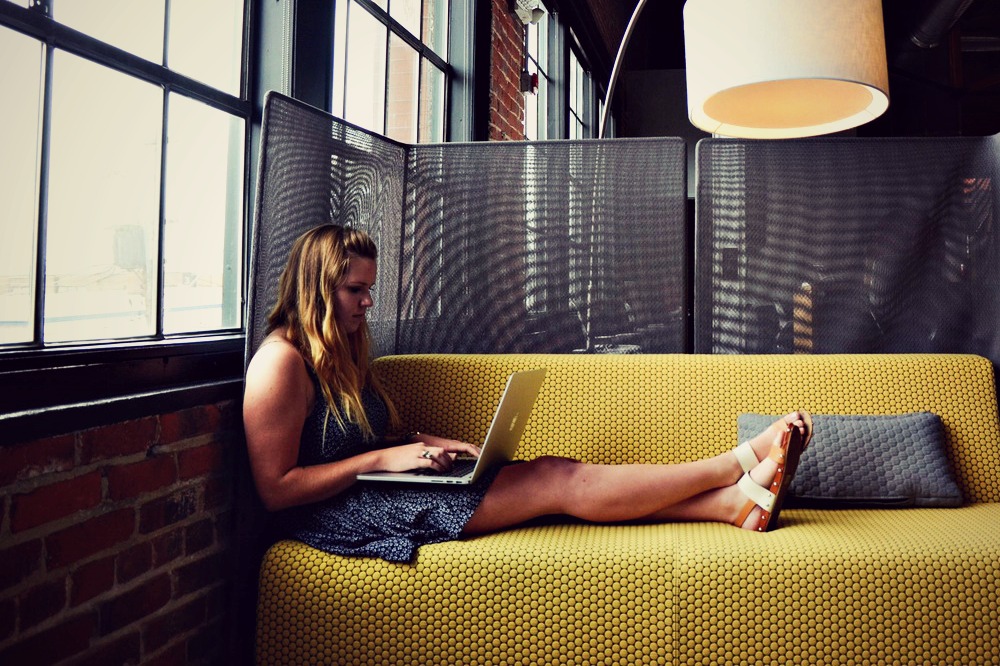Cyberbullies are a special breed of ugly. They wound, they torment, they maim and in the worst cases, if their poison is potent enough, they will scar. Though the direct hits are lobbed by the bullies themselves, bystanders also add to the anguish for those who are targeted.
In a perfect world, we shouldn’t have to act as though we were taking to the battlefield every time we take to a screen. The reality is that we don’t live in a perfect world and unless we humans have found a way to step out of our very human flaws, it is unlikely to be perfect any time soon. In the meantime, we are vulnerable to those with jagged edges and barbed tongues, as they set about to meet their needs in cowardly and cruel ways.
Interesting new research has found something that can increase our vulnerability to an online attack. The vulnerability works in two ways – directly, by making us a more attractive plaything for an online bully, but also indirectly by squashing the potential for bystander support.
Bystanders are often good people – empathic, kind, compassionate – but they are less likely to intervene in situations of online bullying compared to face to face bullying. What is it about a computer screen that has the power to protect a cyberbully from onlookers?
The research. What they Did.
The researchers were interested in whether the personal nature of a post would hold people back from showing support to someone who had been targeted by a cyber-bullying. They were also interested in whether it made a difference that the post was positive or negative.
For the purposes of the study, researchers from UCLA created a fake Facebook profile of an 18 year old woman, ‘Kate’. On her profile they published a comment from her equally fictitious Facebook friend, ‘Sarah’, that read, ‘Who cares! This is why nobody likes you.’ They organised for the comment to receive six (fake) likes.
118 participants aged 18-22 were then organised into 4 random groups. Each group saw one of four Facebook posts from Kate, with Sarah’s stingy response printed below the post. The four posts varied in the level of personal disclosure and whether or not it was a positive or a negative post.
Two groups saw personal posts from the fictitious Kate:
- ‘I hate it when you miss someone like crazy and you think they might not miss you back :(.’ (Negative).
- ‘I love it when you like someone like crazy and you think they might like you back :).’ (Positive).
The other two groups saw her less personal posts:
- ‘I hate it when a Game of Thrones episode ends and you have to wait a whole week to watch more :(.’ (Negative)
- ‘I love it when a Game of Thrones episode ends and you can’t wait until next week to watch more :).’ (Positive).
Researchers then explored whether the participants whether they felt blame or empathy towards Kate and how likely they would be to stand in and support against her cyberbullies.
What they found.
Most of the participants believed that Sarah’s comment was cyberbullying, but their level of empathy, support and blame towards Kate varied depending on which post they saw. Those who saw the more personal posts were not as likely to support Kate in the face of the cyberbullying. Regardless of whether her post was positive or negative, participants felt less compassion towards Kate when her post was a highly personal disclosure.
‘We found that when the Facebook post is a more personal expression of the victim’s feelings, participants showed lower levels of empathy and felt Kate was more to blame for being cyberbullied.’ – Hannah Schacter, lead author.
The research revealed that the personal nature of the post was a key factor, influencing whether online bystanders would stand back or show active support for the victim by posting a supportive message or publicly disagreeing with the bully’s comment.
The likelihood that bystanders would step in a support Kate was influenced by whether or not her post was a personal one. Posts that were more personal in nature seem to stoke more victim blaming and less empathy in bystanders. In these circumstances, bystanders were less likely to show support for a victim of cyberbullying, either by posting a supportive message or by publicly disagreeing with the bully’s comment.
What it means for our time on social media.
The world of social media can be a minefield, with so many of the rules about what is okay and what isn’t being unwritten ones. Sometimes even in the midst of fallout, it isn’t at all clear which ‘rule’ has been broken, or indeed why it is considered a reasonable rule in the first place. Oversharing seems to be one of these hidden rules, making make people more vulnerable to an attack from a cyberbully, but without the support of bystanders to soften the whole ugly experience.
‘Our study suggests oversharing of personal information leads bystanders to blame and not feel for the victim.’ – Hannah Schacter
It seems that in the current landscape of social media, there is a subtle acceptance that when victims overshare, they are somehow inviting an attack from someone who might seek to hurt others. The researchers suggest that more empathy is needed, but they also note that bystanders are often unable to see the pain caused to people from an online bully, so are less likely to be moved into action.
Other startling findings on bullying.
Previous studies by the senior author of the study Janna Juvonen, a UCLA professor of psychology have revealed that:
-
Most bullies have ‘ridiculously high’ levels of self-esteem and are considered considered to be the ‘cool’ kids at school.
Students at 11 schools were asked to name the ‘coolest’ kids, the kids who ‘start fights or push other kids around’ and the ones who ‘spread nasty rumours about other kids’. The kids who were named as bullies were also named more often as the cool kids. In her research, the ‘bully-cool kid’ connection wasn’t evident until the first year of middle school. Juvonen suggests that the turbulence stirred by the transition from elementary school into middle school causes unrest, which triggers a primal seeking of more dominant behaviour.
-
Bullying of kids and teens is common – and vastly unreported.
Nearly 3 out of 4 teens experienced some form of cyberbullying at least once during a 12 months period and only 1 in 10 of them reported the bullying to a parent or other adult. Nearly half of the sixth graders at two schools in the Los Angeles area reported that they were bullied by classmates during a 5-day period.
Raising a child who doesn’t bully.
- Children are more likely to bully other kids if their parents frequently feel angry with them or often feel as though their child is bothering them. This makes sense. Children will learn what they see, and will respond to others the way the important people in their lives respond to them.
- Parents who regularly share ideas and chat with their kids and who have met most or all of their child’s friends are less likely to have kids who become bullies. This sort of involvement offers some protection to kids against becoming a bully.
- Be careful not to overpraise. Love them, praise them and build them up, but let the praise be meaningful and earned – and not excessive. Let them know that they are special, and that everyone else is too.
[irp posts=”1247″ name=”Kind Kids are Cool Kids. Making sure your child isn’t the bully.”]
And finally …
Until empathy becomes embedded in our DNA and is as much a part of the human experience as breathing and sleeping, there will always be those who seek to hurt others. For those who are targeted by bullies, the experience can be a deeply painful one that comes with unimaginable shame, humiliation and feelings of loneliness and grief.
We can’t stop the bullies – it is their growth and sadly, none of us can do it for them. What we can do is step in when we can and widen the buffer around their victims, sending a clear message that the bully stands small and alone, while the victim stands strong and with many.



Leave a Reply